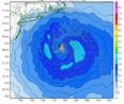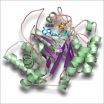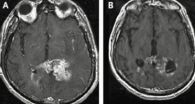(Press-News.org) Researchers at the Juan March foundation and the Duke University (USA) have analysed the reason for casting a protest vote as a way of expressing unhappiness with a party during elections. Moderate voters are more likely to vote in this way than those at the extreme left or extreme right of the political spectrum.
Daniel Kselman, researcher at the Juan March Foundation and co-author of the study that analyses such behaviour states that "the protest vote is just a way of expressing discontent. In order for it to be effective, a lot more voters from your party need to vote for other. However, if there are enough people casting the protest vote, strategic changes need to be adopted or previously ignored political questions need to be faced."
The authors of the study created a probabilistic model that allowed them to distinguish between "strategic voters", who vote for a party despite it not being their favourite because their first choice has no chance of winning, and "protest voters", who choose another party purely to 'punish them' even though they have a chance of winning.
Kselman points out that "protest voters show their unhappiness by voting for a party either more to the right or more to the left of the political spectrum than their preference in the hope that a rise in votes for the competition will encourage their own party to go in one direction or another."
According to the results of the study, when ideological voters are unhappy, they simply abstain from voting. Furthermore, the protest vote is more likely during elections in which it is hope that a party will win by a landslide victory.
The expert explains that "this applies to the current situation in Spain where many believe that the People's Party (PP) will gain an absolute majority. Since there is likely to be a landslide victory in the upcoming elections this Sunday, we expect to see many protest votes from traditional Socialist Party (PSOE) voters, whether for the PP or other parties. This does not mean that they are changing their party preference because they can in fact vote for the PSOE again in the next elections."
As a result, such voting behaviour will increase the diversity of a party and could also help to strengthen smaller parties. Kselman concludes that "sometimes smaller parties begin to receive the majority of their support through protest votes. Consequently, when building up an independent following of their own, such support allows them in time to become significant and important political forces. Therefore, the protest vote could allow new parties to enter mainstream politics."
INFORMATION:
References:
Daniel Kselman, Emerson Niou. "Protest voting in plurality elections: a theory of voter signaling", Public Choice 148 (3): 395-418, 2011. DOI 10.1007/s11127-010-9661-2.
Paper:
http://www.springerlink.com/content/y6hm646274t786l1/
The protest vote prevails when a landslide victory is expected
2011-11-21
ELSE PRESS RELEASES FROM THIS DATE:
NRL Monterey develops more accurate tropical cyclone prediction model
2011-11-21
WASHINGTON -- Researchers at the Naval Research Laboratory (NRL) Marine Meteorology Division (MMD), Monterey, Calif., have developed the Coupled Ocean/Atmosphere Mesoscale Prediction System Tropical Cyclone (COAMPS-TC™) model, achieving a significant research milestone in predictions of tropical cyclone intensity and structure.
While the predictions of the paths or tracks of hurricanes, more generally referred to as tropical cyclones (TC), have steadily improved over the last few decades, improvements in the predictions of storm intensity have proven much more difficult.
"Over ...
Protection from severe malaria explained
2011-11-21
Why do people with a hereditary mutation of the red blood pigment hemoglobin (as is the case with sickle-cell anemia prevalent in Africa) not contract severe malaria? Scientists in the group headed by Prof. Michael Lanzer of the Department of Infectious Diseases at Heidelberg University Hospital have now solved this mystery. A degradation product of the altered hemoglobin provides protection from severe malaria. Within the red blood cells infected by the malaria parasite, it blocks the establishment of a trafficking system used by the parasite's special adhesive proteins ...
Chalmers scientists create light from vacuum
2011-11-21
Scientists at Chalmers University of Technology have succeeded in creating light from vacuum – observing an effect first predicted over 40 years ago. The results is published tomorrow (Wednesday) in the journal Nature. In an innovative experiment, the scientists have managed to capture some of the photons that are constantly appearing and disappearing in the vacuum.
The experiment is based on one of the most counterintuitive, yet, one of the most important principles in quantum mechanics: that vacuum is by no means empty nothingness. In fact, the vacuum is full of various ...
Enzymatic synthesis of pyrrolysine, the mysterious 22nd amino acid
2011-11-21
This press release is available in German.
With few exceptions, all known proteins are built up from only twenty amino acids. 25 years ago scientists discovered a 21st amino acid, selenocysteine and ten years ago a 22nd, the pyrrolysine. However, how the cell produces the unusual building block remained a mystery. Now researchers at the Technische Universitaet Muenchen have elucidated the structure of an important enzyme in the production of pyrrolysine. The scientific journal Angewandte Chemie reports on their results in its "Early View" online section.
Proteins ...
MU researchers develop tool that saves time, eliminates mistakes in diabetes care
2011-11-21
COLUMBIA, Mo. – In the fast-paced world of health care, doctors are often pressed for time during patient visits. Researchers at the University of Missouri developed a tool that allows doctors to view electronic information about patients' health conditions related to diabetes on a single computer screen. A new study shows that this tool, the diabetes dashboard, saves time, improves accuracy and enhances patient care.
The diabetes dashboard provides information about patients' vital signs, health conditions, current medications, and laboratory tests that may need to be ...
Colon cancer screening campaign erases racial, gender gaps in use of colonoscopy
2011-11-21
Since the 1970s, U.S. mortality rates due to colorectal cancer have declined overall, yet among blacks and Hispanics, the death rates rose. Evidence suggests that underuse of colonoscopy screening among these groups is one reason for the large disparities. In 2003, New York City launched a multifaceted campaign to improve colonoscopy rates among racial and ethnic minorities and women. A new study conducted by researchers at Columbia University's Mailman School of Public Health and the NYC Department of Health and Mental Hygiene demonstrates the notable success of the campaign. ...
A corny turn for biofuels from switchgrass
2011-11-21
Many experts believe that advanced biofuels made from cellulosic biomass are the most promising alternative to petroleum-based liquid fuels for a renewable, clean, green, domestic source of transportation energy. Nature, however, does not make it easy. Unlike the starch sugars in grains, the complex polysaccharides in the cellulose of plant cell walls are locked within a tough woody material called lignin. For advanced biofuels to be economically competitive, scientists must find inexpensive ways to release these polysaccharides from their bindings and reduce them to fermentable ...
Great Plains river basins threatened by pumping of aquifers
2011-11-21
CORVALLIS, Ore. – Suitable habitat for native fishes in many Great Plains streams has been significantly reduced by the pumping of groundwater from the High Plains aquifer – and scientists analyzing the water loss say ecological futures for these fishes are "bleak."
Results of their study have been published in the journal Ecohydrology.
Unlike alluvial aquifers, which can be replenished seasonally with rain and snow, these regional aquifers were filled by melting glaciers during the last Ice Age, the researchers say. When that water is gone, it won't come back – at ...
Old drugs find new target for treating brain tumor
2011-11-21
Scientists at the University of California, San Diego School of Medicine and UC San Diego Moores Cancer Center, in collaboration with colleagues in Boston and South Korea, say they have identified a novel gene mutation that causes at least one form of glioblastoma (GBM), the most common type of malignant brain tumor.
The findings are reported in the online edition of the journal Cancer Research.
Perhaps more importantly, the researchers found that two drugs already being used to treat other forms of cancer effectively prolonged the survival of mice modeling this particular ...
GOES satellite eyeing late season lows for tropical development
2011-11-21
Its late in the Atlantic and eastern Pacific hurricane seasons, but the calendar isn't stopping the tropics. The GOES-13 satellite is keeping forecasters informed about developing lows like System 90E in the eastern Pacific and another low pressure area in the Atlantic.
System 90E and the Atlantic low pressure area were both captured in one image from the NOAA's GOES-13 satellite today, November 18, 2011 at 1145 UTC (7:45 a.m. EST). The image was created by the NASA GOES Project (in partnership with NOAA) at NASA's Goddard Space Flight Center in Greenbelt, Maryland.
The ...








